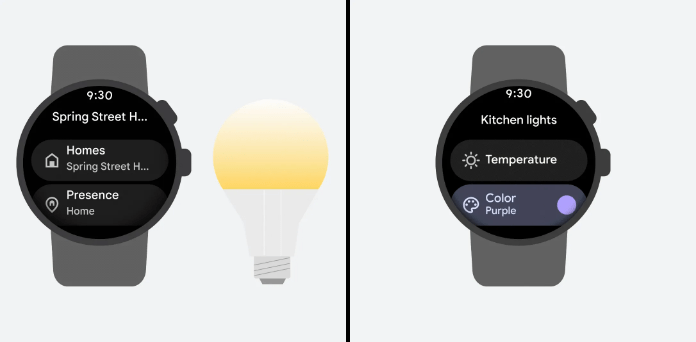Wearable AI Technology Trends 2025: The Future of Integrated Intelligence
Estimated reading time: 8 minutes
Key Takeaways
- The rapid evolution of wearable technology is being significantly driven by advancements in artificial intelligence.
- 2025 is poised to be a transformative year for wearable AI technology, with generative AI and deeper environmental integration reshaping user interactions.
- Expect a rise in ambient computing wearables that offer proactive assistance rather than just passive tracking.
- Smart glasses AI integration will become a pivotal development, enhancing functionalities with real-time information overlays and contextual understanding.
- Smartphones will likely adopt a more complementary role, with wearables becoming primary interfaces for certain tasks.
- Voice and gesture control wearables will become more sophisticated, offering natural and intuitive interaction methods.
- Emerging AI wearable devices 2025 include smart rings, smart clothing, and AI-driven exoskeletons.
- Key challenges like privacy and battery life persist, alongside significant opportunities in health, safety, and productivity.
Table of contents
- Wearable AI Technology Trends 2025: The Future of Integrated Intelligence
- Key Takeaways
- The Dawn of Ambient Computing Wearables
- Smart Glasses: The Next Frontier of AI Integration
- The Evolving Role of Smartphones in an AI Wearable World
- Intuitive Control: Voice and Gesture Control for Wearables
- Beyond the Horizon: Key AI Wearable Devices to Watch in 2025
- Challenges and Opportunities
The landscape of wearable technology is undergoing a seismic shift, fueled by the relentless advancements in artificial intelligence. As we look towards 2025, the integration of AI into our everyday gadgets is no longer a futuristic concept but a rapidly unfolding reality. This evolution promises to transform how we interact with technology, making it more intuitive, proactive, and deeply embedded in our lives. This post will explore the significant advancements and future directions of AI in wearable devices anticipated for 2025, covering the emergence of ambient computing, the enhanced capabilities of smart glasses, the evolving role of smartphones, and innovative control methods. Indeed, 2025 is poised for a significant transformation in wearable AI technology, driven by generative AI and deeper integration into daily environments, reshaping how we interact with technology.

The Dawn of Ambient Computing Wearables
At the forefront of this technological revolution are ambient computing wearables. These are not just devices that passively track our steps or heart rate; they are intelligent companions designed to seamlessly integrate into the fabric of our daily lives. Their defining characteristic is their ability to offer proactive assistance, anticipating user needs without requiring explicit commands. This proactive capability is made possible by sophisticated AI algorithms that learn user patterns, context, and preferences.
Imagine a wearable that nudges you to hydrate during a strenuous workout, not because you’ve set a reminder, but because it senses your physiological cues indicating dehydration. Or one that offers unintrusive health reminders, like suggesting a short break from your desk if it detects prolonged sedentary behavior. At work, it might even suggest productivity enhancements based on your current task and energy levels.
This marks a significant shift from “passive trackers” to “proactive assistants.” These AI-powered devices are becoming increasingly integrated with other digital ecosystems, allowing them to understand and respond to a wider range of contextual information. The goal is to reduce the burden of manual interaction, making technology an invisible yet ever-present helper. The intelligence embedded within these wearables allows them to orchestrate helpful interventions at the most opportune moments, creating a more fluid and supportive user experience.

Smart Glasses: The Next Frontier of AI Integration
Among the most exciting developments in wearable technology for 2025 is the accelerated smart glasses AI integration. While smart glasses have been around for some time, the infusion of advanced AI is set to unlock their true potential, moving them from niche gadgets to indispensable tools.
AI will dramatically enhance the functionalities of smart glasses, transforming them into powerful augmented reality interfaces. Users can expect real-time overlays of relevant information directly within their field of vision, significantly improving situational awareness. Consider the ability to instantly translate a foreign language spoken to you, or for the glasses to identify potential hazards in your environment before you even notice them. This contextual understanding, powered by AI, will redefine how we perceive and interact with the world around us.
The impact of AI-powered smart glasses will be felt across a multitude of sectors:
- * Manufacturing and Field Services: Imagine technicians wearing AI-powered AR glasses that visualize hazards on a factory floor, or provide live, step-by-step troubleshooting guidance. This not only boosts safety by highlighting potential dangers but also dramatically increases productivity by ensuring tasks are performed correctly and efficiently the first time.
- * Healthcare: The potential applications are vast, from AI-assisted diagnostics where the glasses can highlight anomalies on medical scans to providing surgeons with real-time guidance during complex procedures.
- * Education: AI-driven smart glasses can create immersive learning experiences, overlaying historical context onto real-world locations or providing interactive 3D models for complex scientific concepts.

It’s clear that AI integration in smart glasses is a key trend for 2025, building upon existing impacts in sectors like manufacturing and healthcare, and paving the way for even more sophisticated applications in the near future. The ability to blend digital information with physical reality in a contextual and intelligent manner is a game-changer.
The Evolving Role of Smartphones in an AI Wearable World
As AI wearables become increasingly capable, the traditional role of the smartphone is set to evolve. The advancements in wearables aren’t necessarily about replacing smartphones entirely, but rather about augmenting their capabilities and, in some instances, shifting the primary interface for interaction.
We are moving towards a “less-phone-centric” future. In this paradigm, wearables might serve as the primary point of contact for information, communication, and health management. Imagine receiving notifications, responding to messages, or checking vital health metrics directly from your watch or smart glasses, significantly reducing the need to pull out and interact with a smartphone screen.
However, this doesn’t imply a complete obsolescence of smartphones. Instead, we will likely see a more synergistic relationship. Wearables and smartphones will share data seamlessly, allowing for richer contextualization of notifications and alerts. For example, a wearable might detect an urgent biometric reading, and the smartphone could then proactively suggest relevant medical resources or alert emergency contacts, leveraging the strengths of both devices to expand user capabilities beyond what either could achieve alone.

This evolving dynamic means that smartphones will likely become more powerful hubs for processing and data management, while wearables will excel at real-time interaction and contextual sensing. The lines between these devices will blur, creating a more integrated and responsive personal technology ecosystem.
Intuitive Control: Voice and Gesture Control for Wearables
A key enabler for the seamless integration of AI into wearables is the advancement in natural user interfaces. Specifically, voice and gesture control wearables are becoming more sophisticated and intuitive due to AI advancements.
Users can expect significant improvements in the coming year:
- * Increased accuracy for voice commands: AI models are becoming better at understanding natural language, even in noisy environments, reducing the frustration of misunderstood commands.
- * More fluid and context-aware gesture recognition: Gestures will move beyond simple taps and swipes to more complex, intuitive movements that AI can interpret with higher precision and in the context of the user’s current activity.
- * Potential for emotion-adaptive responses: As wearables become better at sensing user state through biometric data, AI could enable devices to adapt their responses based on the user’s mood or stress levels, offering a more personalized and empathetic interaction.

The benefits of these advanced control methods are profound. They offer true hands-free operation, which is invaluable for multitasking and convenience. Furthermore, they enhance accessibility, making technology usable for a wider range of individuals, including those with physical limitations. The ability to interact with devices naturally and efficiently will speed up tasks, from controlling smart home appliances to responding to messages and navigating complex augmented reality environments.
AI’s growing sophistication is the primary driver behind these advancements, making the dream of truly intuitive voice and gesture controls in wearables a reality for 2025.
Beyond the Horizon: Key AI Wearable Devices to Watch in 2025
While smartwatches and fitness trackers are already mainstream, 2025 will see the rise and greater adoption of more specialized and innovative AI wearable devices.
Here are some categories to keep an eye on:
- * Smart rings: These discreet devices are packing impressive capabilities, including contactless payments, advanced biometric monitoring (going beyond simple heart rate to include sleep patterns, stress levels, and even blood oxygen), and subtle, non-disruptive notifications. AI helps in processing the rich sensor data for actionable insights.
- * Smart clothing and e-textiles: Imagine apparel embedded with sensors that provide continuous biometric feedback, offer protective alerts in hazardous environments, or even suggest actions based on your body’s state, like recommending a rest or a change in posture. AI will be crucial in interpreting this constant stream of data for personalized feedback.
- * AI-driven exoskeletons: These are particularly relevant for industrial and professional settings. They analyze a worker’s movement in real-time, providing adjustable assistance to prevent fatigue and enhance safety, especially for tasks involving heavy lifting or repetitive motions. AI optimizes the support based on the user’s specific needs and the task at hand.

The overarching trends for these advanced devices point towards greater efficiency, often driven by edge AI processing to reduce reliance on cloud connectivity. We’ll also see better environmental integration, meaning devices designed to work harmoniously with your surroundings, and a continued development of sustainable, comfortable designs that make wearing technology a pleasure rather than a burden.
Challenges and Opportunities
Despite the exciting progress, the widespread adoption and development of AI in wearable technology are not without their hurdles. Key challenges include:
- * Privacy concerns: The continuous collection of personal data raises significant privacy questions that need careful consideration and robust safeguards.
- * Battery life limitations: Powering sophisticated AI algorithms and constant connectivity often puts a strain on device batteries, a persistent challenge for wearables.
- * Data security: Ensuring the sensitive data collected by wearables is protected from breaches is paramount.
- * Ethical considerations: The deployment and use of AI in wearables raise ethical questions, particularly concerning autonomy, decision-making, and potential biases in algorithms.
- * User acceptance and adoption barriers: Overcoming skepticism, ensuring intuitive user interfaces, and demonstrating clear value are crucial for widespread adoption.

However, these challenges are counterbalanced by immense opportunities:
- * Enhanced personal health insights: AI wearables offer unprecedented potential for proactive health management, early detection of potential issues, and personalized wellness plans.
- * Improvements in workplace safety and efficiency: As seen with smart glasses and exoskeletons, AI in wearables can directly contribute to safer and more productive working environments.
- * Boosts in personal productivity: From managing schedules to providing context-aware assistance, AI wearables can help individuals be more efficient in their daily lives.
- * Sustainable and eco-friendly designs: The drive towards smaller, more efficient devices also opens doors for innovative and sustainable material usage and manufacturing processes.

AI is creating fertile ground for new business models and the potential for a significantly improved quality of life, despite the ongoing obstacles that need to be navigated.
Looking Ahead: The Seamless Future
The wearable AI technology trends 2025 paint a clear picture: a future where technology is not just a tool we use, but an integrated extension of ourselves, offering proactive, context-aware assistance. The evolution towards ambient computing, enhanced smart glasses, and more intuitive control methods signifies a profound shift in our relationship with personal technology.
The transformative potential of AI in wearables is vast, poised to reshape healthcare through personalized monitoring and early diagnostics, enhance daily convenience by streamlining tasks and providing instant information, and revolutionize our personal interactions with the digital and physical worlds. We are ushering in an exciting era of seamless, intuitive ambient computing, where technology anticipates our needs and supports us in myriad ways.

Consider how these advancements might shape your own technological interactions in the near future. Which AI wearable are you most excited to see become a reality?
Explore the latest innovations in wearable tech.
Discover some of the coolest wearable tech gadgets.
Learn about game-changing fitness wearables.
Find wearable health gadgets for a healthier life.
Check out the best smartwatches for fitness in 2025.
Understand the future of powerful AI-powered wearables.
Get a guide to revolutionary AR-powered wearables.





